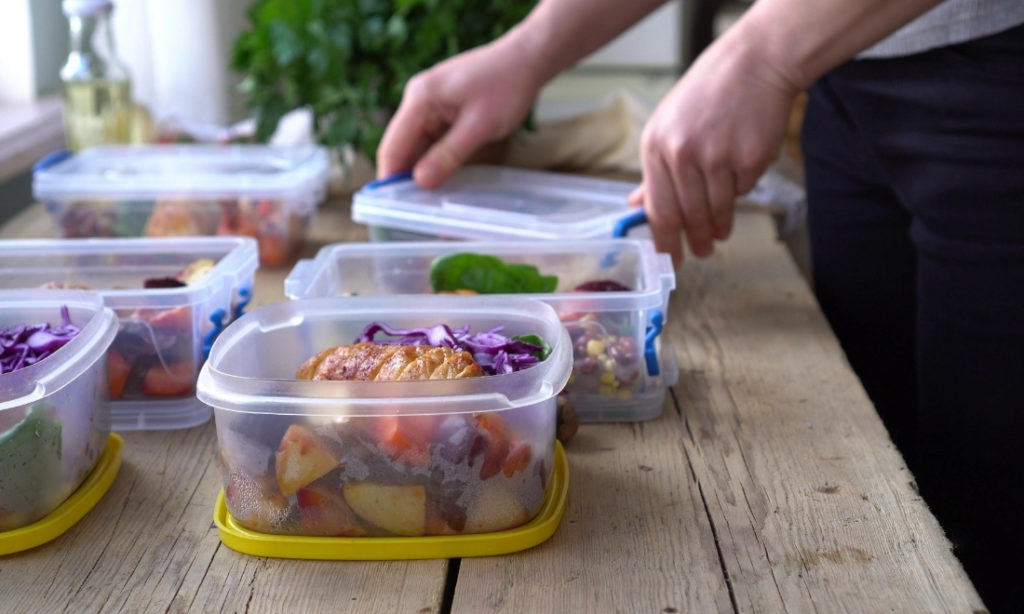3 Time-Saving Hacks for Eating Well

Your clients likely know the importance of healthy eating but many think they’re too busy for it. What they need are time-saving strategies that they can stick with. It takes time to adopt new habits, so suggest these three and encourage your clients to choose one they feel they can succeed at.
1. Start meal planning.
When we don’t plan our meals, we eat whatever’s convenient and, too often, it’s ultra-processed foods like white bread, cookies, salty snacks, and sweet drinks. In fact, almost 50 per cent of calories in the Canadian diet come from these products.
That’s why a good first goal for meal planning is to eat more nourishing foods like veggies, fruit, whole grains, fish, eggs, beef, nuts and beans, and fewer highly processed foods, which tend to offer few nutrients in return for the high calories they provide.
There is no one right way to meal plan, but a few tips can help. First, keep it simple. Start by planning just two or three breakfasts, lunches or dinners – not a whole week of meals. This easy win can be a great confidence booster. Build on that success by planning a few more meals each week. Keep it up and meal planning will become a habit.
What to put in a meal plan? Encourage your clients not to overcomplicate things. They can build healthy plates by filling half with veggies/fruit (fresh, frozen or canned), one-quarter with protein (eggs, fish, beef, beans, nuts) and one-quarter with whole grains (quinoa, barley, oats, brown rice, bulgur).
TIP: For clients who are less comfortable in the kitchen or who are feeling “cooking fatigue,” remind them that eggs are easy to prepare, versatile, and budget-friendly. They’re also a fresh, nutritious, local food that takes only four to seven days to get from the farm to the grocery store.
2. Get in the habit of batch cooking.
Batch cooking means preparing extra portions or extra ingredients. It gives you a head start on future meals, which saves time and makes it easier to eat a healthy diet. (Plus, you’ll have fewer dishes to wash!)
It takes as little as 30 minutes to prepare one or two extra things for the week ahead. All of these foods can be batch-cooked, and they keep for three to five days in the fridge:
- Grains: brown rice, bulgur, barley, quinoa
- Beans (pinto, kidney, navy), chickpeas, lentils
- Cooked vegetables: peppers, broccoli, sweet potatoes, tomatoes
These foods keep for three to four days in the fridge:
- Cooked salmon, beef, poultry, pork
- Prepared dishes: chili, fried rice, frittatas, veggie soup, lasagna, curries, meat stews
Hard-cooked eggs keep for seven days in the fridge, with the shells on.
TIP: To limit food waste, designate a bin in the fridge for food with an “eat by” date.
3. Get creative with prepared ingredients.
How to use these batch-cooked ingredients? Here are some ideas:
- Leftover rice can be used to make egg fried rice, stuffed peppers, and burrito bowls.
- Cooked veggies can be added to frittatas, nourish bowls, flatbread pizzas, wraps and salads, or blitzed into hummus for a veggie hummus.
- Cooked (or canned) beans make great dips and spreads. Add mashed beans to beef burgers, or try a simple yet delicious meal of refried beans with brown rice topped with a fried egg and generous side of guac and pico de gallo.
- Cooked salmon can be made into salmon cakes (try them with peanut sauce), stuffed into fresh spring rolls or added to an omelet.
- Hard-cooked eggs can be made into egg salad for wraps or as a veggie dip, sliced into veggie salads, added to noodles in a bowl, or enjoyed with raw veggies for a great hunger-curbing afternoon snack.
TIP: Having a plan for your batch-cooked ingredients helps ensure that these foods, and your clients efforts, don’t go to waste.
Dietitian approved resources to share with your clients:

